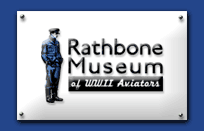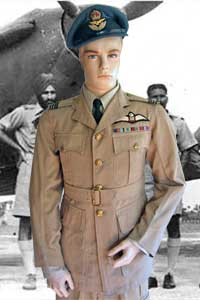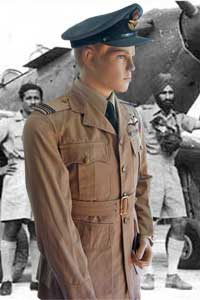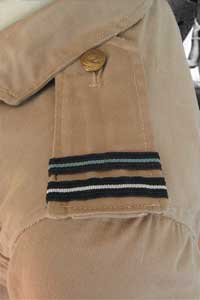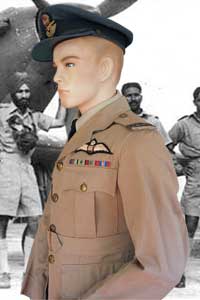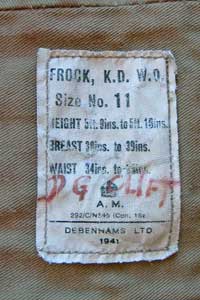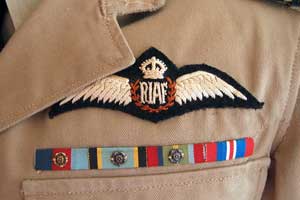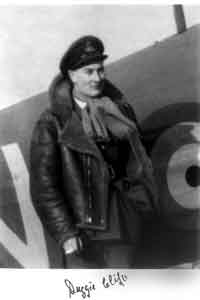|
Born March 15th, 1919, Douglas Gerald Clift joined the RAF on a short service commission in January 1939 and trained in Shawbury and Hamble. He began his operational career November 17th, 1939, starting with 79 Sq Hurricanes out of Biggin Hill in the Battle of Britain and ending it in 1945 with Spitfires as part of the newly renamed Royal Indian Air Force. Above is his Battle of Britain biography. Clift was an official ace with five confirmed victories
Sadly, Duggie Clift passed away December 31st, 2008. He was 89.
|
This is F/L Clift's No. 1 Tropical Service dress from around 1945. Not what we would call work wear but something to be worn in the office. It is made up of a Khaki Drill Frock, an officer's khaki shirt with black tie, KD trousers and the standard blue RAF service cap. Rank is displayed on firm board epaulets on each shoulder.
|
F/L Clift had a far reaching career, moving from Fighter Command in the UK to the unusual duty of an MSFU pilot, guarding convoys from a rocket-launched fighter. He moved to East India at the end of the war. Clift continued in the RAF after WWII, retiring in 1974. He was a radar specialist. |
|
| The boards for the RAF were only worn on Tropical tunics, full dress wear and overcoats. Otherwise the braid was displayed on the cuffs. The two stripes for Flight Lieutenant are different, reflecting a promotion. The internal stripes are newer and less faded. |
|
D. G. Clift standing in front of a Spit with native Indian pilots. |
The interior of the tunic showing that it was originally manufactured in 1941 as a Warrant Officer's tunic. D. G. Clift's name is written in red ink. |
|
|
|
The tunic has a remarkable wing which is relatively rare. Prior to 1945, the force was known simply as the Indian Air Force. It was constituted primarily of British Officer's and Indian other ranks. Gradually, native Indians were trained and commissioned as pilots. In 1945 the force received its royal charter and was renamed. In 1950, the force reverted to Indian control and was renamed the Indian Air Force. The British crown was removed and 3 tigers standing on a column were put in its place.
Below his wing, Clift wears his ribbons including (from l. to r.) the 1939-43 star with the gold Battle of Britain rosette. The air crew Europe star with the Atlantic star rosette. The pacific star with the Burma star rosette and finally the 1939-45 War Medal.
|
|
